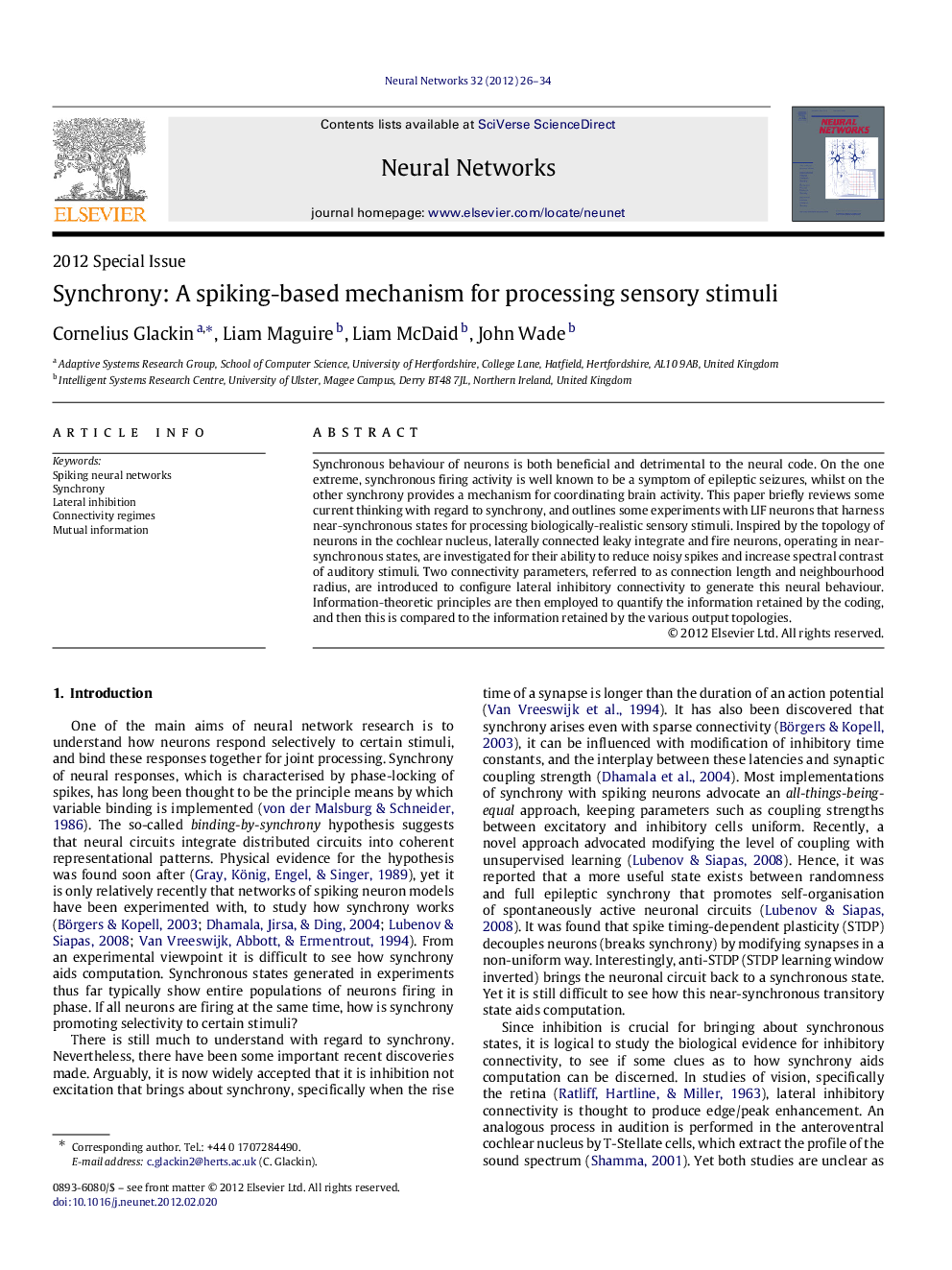| Article ID | Journal | Published Year | Pages | File Type |
|---|---|---|---|---|
| 404317 | Neural Networks | 2012 | 9 Pages |
Synchronous behaviour of neurons is both beneficial and detrimental to the neural code. On the one extreme, synchronous firing activity is well known to be a symptom of epileptic seizures, whilst on the other synchrony provides a mechanism for coordinating brain activity. This paper briefly reviews some current thinking with regard to synchrony, and outlines some experiments with LIF neurons that harness near-synchronous states for processing biologically-realistic sensory stimuli. Inspired by the topology of neurons in the cochlear nucleus, laterally connected leaky integrate and fire neurons, operating in near-synchronous states, are investigated for their ability to reduce noisy spikes and increase spectral contrast of auditory stimuli. Two connectivity parameters, referred to as connection length and neighbourhood radius, are introduced to configure lateral inhibitory connectivity to generate this neural behaviour. Information-theoretic principles are then employed to quantify the information retained by the coding, and then this is compared to the information retained by the various output topologies.
